Revisions to planets’ magnitudes in this year’s Astronomical Almanac have revealed some surprises.
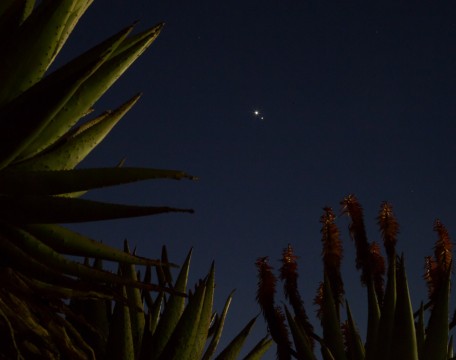
Simon Walsh / S&T Online Photo Gallery
Venus is the brightest planet and Neptune is the faintest. Right? While there is no doubt about Venus’s brilliance, it turns out Neptune might not always be the faintest. A new formula for calculating Mercury’s brightness indicates that it can appear fainter than magnitude 7 when it’s a thin crescent, about the same brightness as Neptune.
The U.S. Naval Observatory has recently adopted new equations for computing the apparent brightness of all the planets for its yearly Astronomical Almanac. Meanwhile, NASA’s Jet Propulsion Laboratory plans to adopt these same formulas for their online Horizons ephemeris system.
But why did we need these revisions? We’ve seen many technological advances, including CCD photometry and space telescopes, since the last comprehensive research on planetary magnitudes was conducted. The time had come for renewed investigation, and the results proved to be well worth the effort.
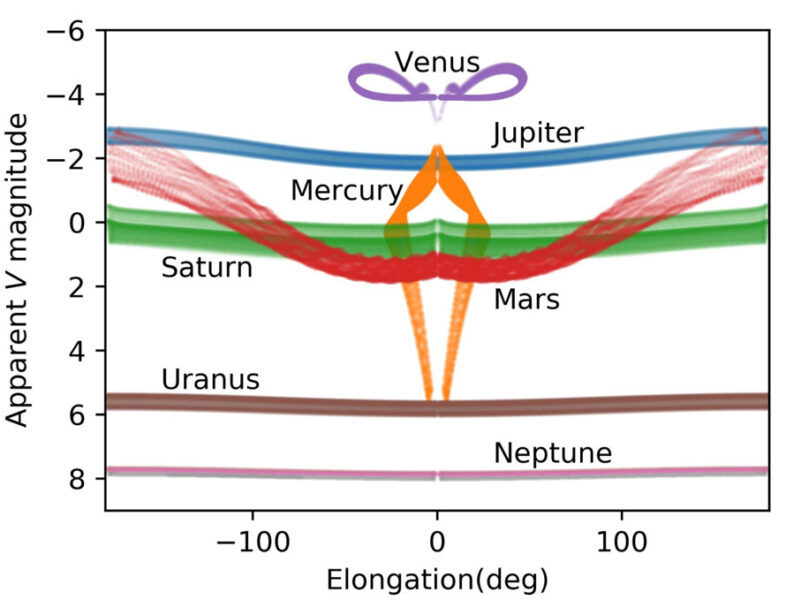
Anthony Mallama & James Hilton
Mercury
When I began investigating Mercury about 20 years ago, our knowledge of its surface characteristics depended on brightness models, which in turn depended on outdated visual observations. Collaborating with Russell Howard and Dennis Wang at the Naval Research Laboratory in Washington, DC, I observed Mercury while it was near the Sun using the Solar and Heliospheric Observatory (SOHO). This data precisely determined how Mercury’s brightness changes with its phase. Analysis of this phase function then enabled us to derive other properties, such as the planet’s roughness. Turns out, Mercury is about as rough as the Moon.
Venus
Our research on Mercury was successful enough that it encouraged us to investigate other planets. I’d been recording magnitudes of Venus with a ground-based telescope and a CCD camera when I came across an unexpected feature in its phase function. Most bodies, such as the Moon and Mercury, become fainter when their crescent becomes thinner. Venus does likewise but only up to a certain point — then it becomes brighter!
We turned to SOHO again to determine Venus’s phase function when it was very near the Sun. Analysis of these observations revealed that the thin crescent’s excess brightness comes about when droplets of sulfuric acid suspended high in the Venusian atmosphere scatter sunlight forward, toward Earth. This phenomenon is similar to a “glory” in Earth’s atmosphere where water droplets scatter sunlight. From the SOHO data, we found that Venus approaches magnitude –5 at its greatest brilliancy, when it’s about 22% illuminated.
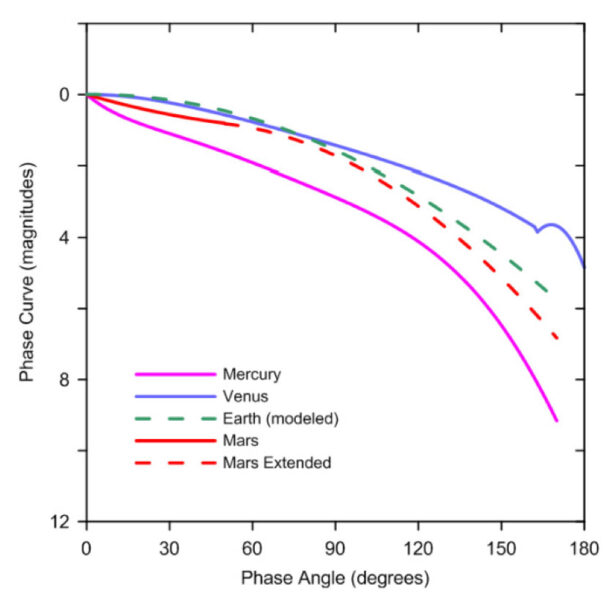
Anthony Mallama
Mars
Moving outward in the solar system, I compiled an extensive database of published Martian magnitudes dating back to the 1950s. Richard Schmude, a prolific amateur observer from the Association of Lunar and Planetary Observers, obtained many of the more recent magnitudes. Richard advised me early on that Mars’s brightness would be more difficult to characterize than that of Mercury or Venus — and he was right.
In addition to its phase, Mars’s magnitude is influenced by the bright and dark albedo features that rotate across its visible disk as well as the state of its atmosphere, especially when dust storms are present. On the whole, Mars turned out to be somewhat brighter than previously thought. The planet peaks near magnitude –3 (–2.94 to be exact) at favorable oppositions, when Mars is particularly close to Earth.
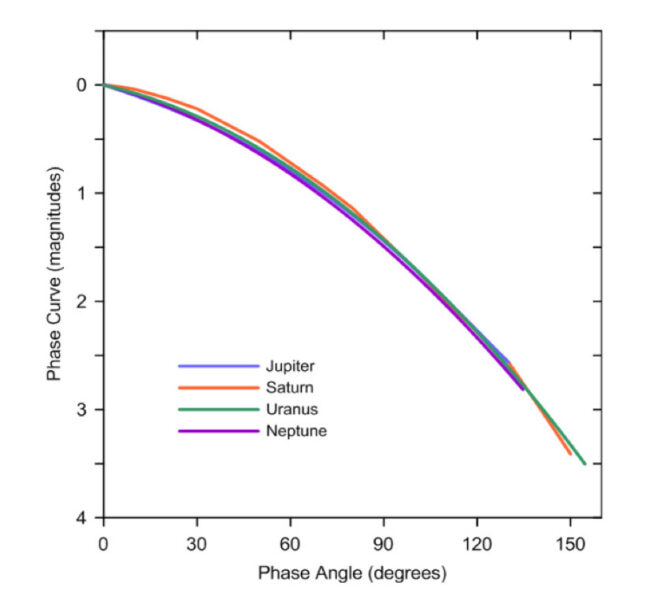
Anthony Mallama
Jupiter & Saturn
By coincidence, Jupiter also peaks at magnitude –2.94, so it ties with Mars for second place in brightness as seen from the Earth. Mercury at its brightest is about a half-magnitude fainter at –2.48, and Saturn takes fifth place.
Saturn’s brightest magnitude, –0.55, occurs when the planet is both at perihelion (closest to the Sun in its orbit) and its ring system is open to the maximum extent as seen from Earth. Interestingly, the phase function for Saturn’s rings is much stronger than that for the globe itself — in other words, the ring particles backscatter sunlight far more effectively than does the planet’s cloudy atmosphere.
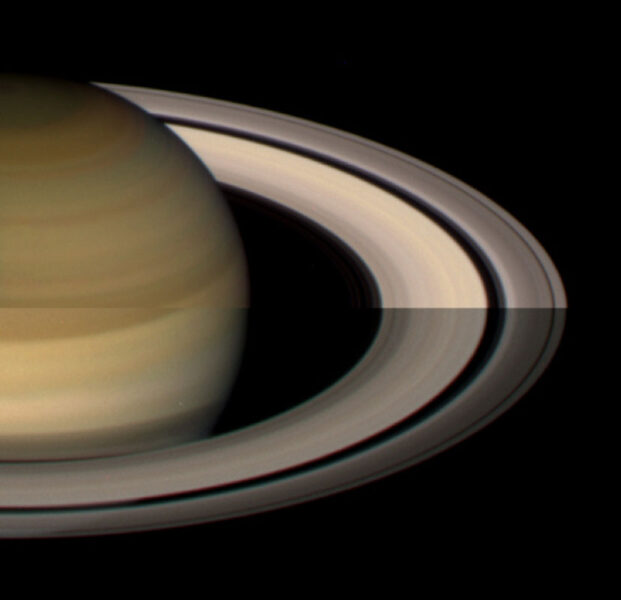
NASA / ESA / STScI / A. Mallama
Uranus
Uranus is peculiar among the planets because its rotational axis is highly inclined to its orbit. Thus, observers on the Earth sometimes see the equator near the center of the visible disk and at other times they see the polar areas. This unusual geometry repeats every orbit, leading to unexpected variations in brightness.
Richard Schmude was the first to notice that the ice giant’s brightness is greater when Earth’s view is centered on its poles. He and I collaborated on a study of Uranus using observations that span 61 years of the planet’s 84-year orbital period. We concluded that the relative absence of atmospheric methane near the planet’s poles allow Uranus to reflect more sunlight back toward Earth. Closer to the equator, more abundant methane absorbs much of the light.
Neptune
Neptune also held a surprise in store for us, and we don’t understand yet what happened. While the planet’s magnitude stayed relatively constant before 1980, and stabilized again after 2000, in the intervening decades the planet brightened by an unexpected — and unexplained — 11%. Neptune is alone among the planets in exhibiting a significant long-term change in its inherent brightness. Astronomers have proposed some ideas to explain this peculiar variation but none are convincing. More amateur magnitude observations may help to solve this riddle.
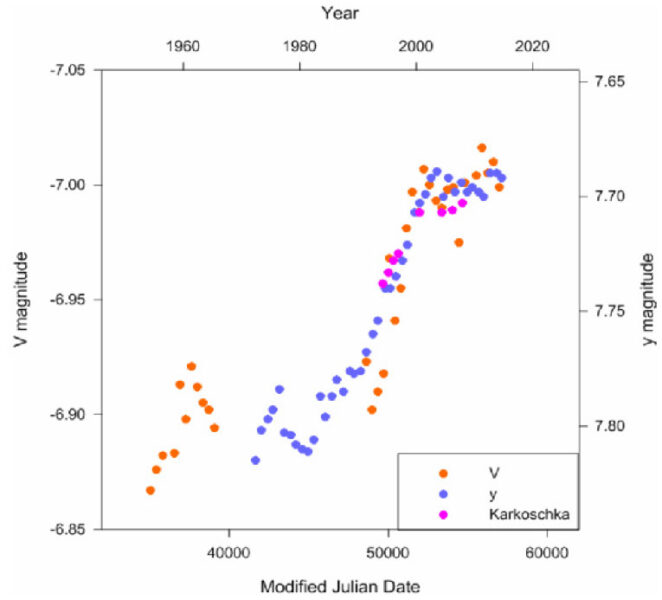
Anthony Mallama
Interplanetary Magnitudes
One final task we undertook as part of this research was to examine every planet’s magnitudes as seen from every other planet. In order to include all eight planets, we derived Earth’s brightness and phase function by combining observations from the EPOXI spacecraft and models of Earth’s surface and atmosphere.
In a study that I published with James Hilton of the U.S. Naval Observatory, we found that the brightest interplanetary magnitude is an astonishing –8! This is 18 times the greatest brilliancy of Venus (as seen from Earth) and occurs when Venus is at opposition from the Sun as seen from Mercury. At the other extreme, one scenario had the crescent Mercury at magnitude +16 for an observer at Neptune.
A study that began with limited sets of observations of Mercury in 1999 has developed into a comprehensive analysis of all planetary magnitudes. My colleagues Hristo Pavlov, the late Bruce Krobusek, and I even applied these results to the study of exoplanets and the purported Planet Nine. Now our investigation has achieved a final goal — providing accurate planetary magnitudes for almanacs and ephemerides.
Anthony Mallama co-founded the Chagrin Valley Astronomical Society near Cleveland Ohio in 1963. He spent his professional career at Goddard Spaceflight Center where he performed astronomical research and supported satellite projects such as the Hubble Space Telescope. Asteroid 417955 Mallama is named after him.
 2
2









Comments
Simon Walsh
May 31, 2020 at 4:59 am
Very interesting article, with something seemingly as well established as planetary brightness yielding surprises after a closer analysis! It was a pleasant surprise to see my photo of the conjunction of Venus and Jupiter from 2015 used on the "Observing" page as its thumbnail. I took the photo on July 1st from Spionkop Lodge in Kwazulu Natal, South Africa, with a fine specimen of the endemic aloe species in bloom in the foreground. The depth of field was challenging to achieve and this was my best result, using 65mm at f/16 2s exposure. After submitting it, I thought no more of its presence online, but it has remained one of my favourites. Glad to see my image published at last, and proud to have it associated with this excellent article!
You must be logged in to post a comment.
NarnaPeeel
June 13, 2020 at 1:36 pm
Hey Simon, great photo, got any more like it?
JamesG
You must be logged in to post a comment.
You must be logged in to post a comment.